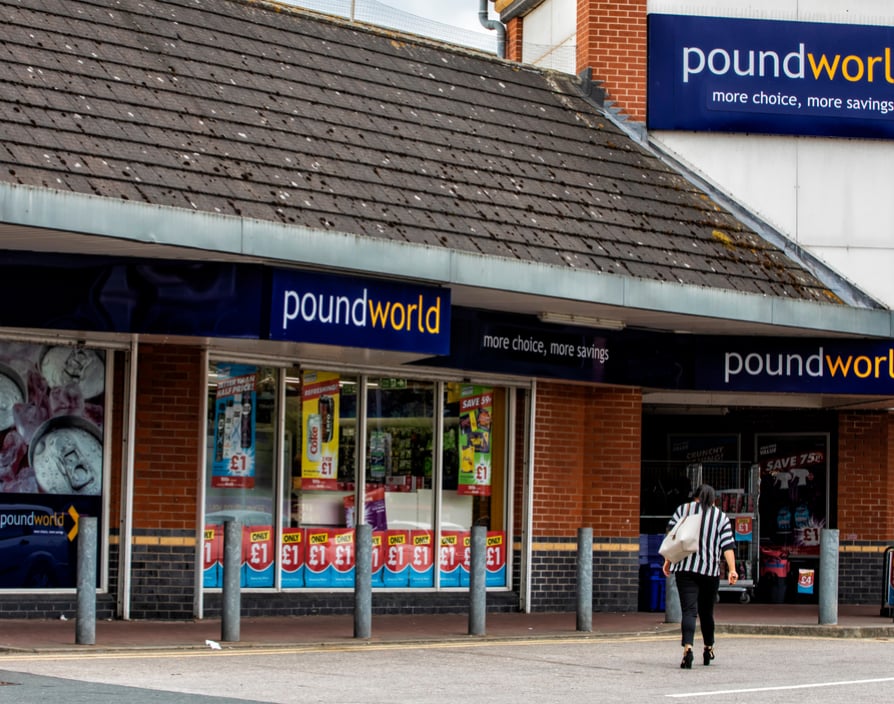The retail epidemic has been going on for the past few years but 2018 has been the epitome of job cuts and companies declaring bankruptcy. As we inch closer to Brexit, store owners are demotivated amidst plummeting sales. In fact, big brands, restaurants and even automation companies have declared their worst cash losses since 2013 and the headwinds are still raging.
The reason for the dearth of sales sees fingers pointed at the likes of Amazon and ASOS, which are flying thanks to the ease and convenience that online brings consumers and the low costs involved to operate. In fact, a study by DigitalID found that after 741 shop closures in the first quarter of 2018, the numbers are predicted to go up to 2,964 in the next six months. This might be proved to be true as more headlines about death of the high street rack up.
Big brands were falling prey to insolvency due to sky-rocketing rent prices and hence resorting to company voluntary arrangements (CVAs), a form of insolvency proceedings to overhaul their business. However, issues remain. “There is less certainty in filling large units quickly, with the alternative to a CVA being shut down and a vacant unit for an unknown period of time,” said Chris Horner, a consultant at Business Rescue Expert, an insolvency specialist firm.
Here are the top ten most appalling casualties from the year so far:
(1) Poundworld
Even when everything is only a pound, there seems to be no cash flowing for Poundworld. The company will soon be a name of the past and the brand will become history as a discount retailer after it announced the closure of all its 355 stores, axing 5,100 jobs in the process. The company surrendered to administration in June after failing to make profits and slowly shut shop completely.
(2) Marks & Spencer
Sadly, no amount of Gareth Southgate waistcoats will guarantee the future of Marks & Spencer (M&S) after the high street stalwart announced the closure of a 100 stores by 2022. It’s a stark turnaround from the time when an M&S opening was earmarked as a prime location other retailers would flock to. After noticing a struggle to maintain sales and 62% fall in profits in the current year, it failed to keep up with competition from discounters such as Lidl, Aldi and Primark. “In decades to come, there could be no M&S,” Archie Norman, chairman of the brand, said at the annual general meeting, as reported by The Guardian.
(3) House of Fraser
House of Fraser announced the closure of 31 out of 59 stores across the UK which included the flagship store on Oxford Street in London, which will cost 6,000 jobs. The department store retailer even announced relocating its Baker Street head office and Granite House office in Glasgow to new locations to help cut costs. “Our legacy store estate has created an unsustainable cost base which, without restructuring, presents an existential threat to the business,” said Frank Slevin, the chairman, reported the BBC.
(4) Carpetright
Thanks to high property prices, fewer people are moving homes, which means fewer people want flooring. This resulted in Carpetright closing 92 stores out of its 400 stores as the floor-covering chain reported an annual loss of £9m. “The CVA proposal will enable us to take the tough but necessary actions needed to restore our profitability,” said Wilf Walsh, the chief executive.
(5) Maplin
On Monday June 25, Maplin was officially laid to rest, only to be known in the history books of the UK high street. The 46-year-old electronics retailer had to go into administration and close down its 200 stores, making over 2,300 of its staff redundant. The withdrawal of credit insurance, lack of customer confidence and Brexit gave rise to this event, according to owner Graham Harris. The company owed around £150m to its creditors which it was unable to recover through sales.
(6) Toys R Us
Nobody expected children’s heaven Toys R Us to go bust. Whether it’s technology and the ease that kids have by downloading an app in 30 seconds for entertainment on parents’ devices or the lack of creativity to impress the modern child, the brand shut all 105 stores taking with it 3,000 UK jobs. Moorfields Advisory, the firm in charge of the closure of the retail chain, confirmed it was commencing a nationwide closing down sale at all stores with a £15m tax bill to pay.
(7) New Look
Even when the economy slumps, fashion brands always managed to stay afloat, given the increasing number of influencers. But New Look was running up the down escalator after seeing a huge loss and announced the decision to shut 60 stores nationwide, putting 1,000 employees out of jobs. It was a “tough decision” to make, said Alistair McGeorge, the executive chairman, albeit necessary to restore the chain to profitability. “It is clear we need to reduce our fixed cost base,” he said. We think the culprit in this case similar to M&S would be Primark and even online fashion retailers.
(8) Dixons Carphone
After profits plunged, Dixons Carphone, which owns Currys PC World and Carphone Warehouse, decided to close 92 of its 700 stores. The international firm, which has locations in nine countries, had a 20.7% profit fall this year. It was rather an unpleasant 2018 for the brand after it admitted to a data breach in June when 5.9 million payment cards and 1.2 million personal data records were compromised. Alex Baldock, the chief executive, admitted that: “Nobody is happy with our performance,” reports the BBC.
(9) Debenhams
Debenhams was another victim of the high street epidemic in the UK as it considered closing down ten stores and cutting 320 management jobs. Share prices and profits were seen slacking by 0.9% though the summer, which are the main months of profit for the multi-brand retailer.
(10) Mothercare
60 of Mothercare’s 137 stores are to shut, which puts over 900 jobs at risk. The parent-facing retailer also filed for a CVA due to excessive debt. “The retail landscape is pretty brutal at the moment,” Mark Newton-Jones, the chief executive told the BBC. Indeed, he’s not wrong – it isn’t alone in the disaster that is the high street crisis.
Even though the high street is going through a retail apocalypse, startups can cash in and ensure they don’t follow in the footsteps of these brands. “As a series of large retailers falter, at the same time we’re beginning to witness the rise of the independent retailer,” said Komal Helyer, director of Pure360, a marketing company, referring to the famous David and Goliath theme. “Independents offer a niche product set, a more personalised experience and can adapt quickly to the changing needs and situations of a consumer. For many larger brands this level of agility is insurmountable, making them look outdated and disconnected.”
Seemingly, evolving with the times and catering to the current millennial consumerism seems to be the only solution for brands – whether established or emerging. Given that e-commerce will encompass 40% of UK sales by 2030, according to Parcelhero’s research, it’s no secret that the web is increasingly dominating the market.
Even with the red-hot temperatures, World Cup and the royal wedding, the high street continued to see a slump but profits in the online market, especially for Amazon, were booming. You only have to look at the results of Prime Day to see that there is money out there to be spent by consumers – but it needs to be on their terms. The question is whether it’s really the end of an era or the start of a tech-conducive one?
Concluding with hope for SMEs, Hope added: “This should however be looked at as an opportunity for SMEs. New names can rise and create new innovative experiences to revive the high street and should be encouraged to do so.” ![]()
Share via:


















































